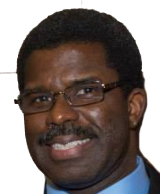As a college student studying theatre in the early 1980s, I frequently paid 50 cents to take PATH to New York, stand on line at the TKTS booth in Duffy Square, and pay $12.50 to see a Broadway show. (A regular ticket was $25.) Venturing into midtown Manhattan during the Reagan presidency was an adventure, as you had to make your way through homeless people living in the street and avoid eye contact with the ladies of the night. Half the Broadway theatres were dark and shuttered. Tickets were relatively inexpensive, so young artists and enthusiasts had easy access to plays, which also served as an extended classroom for emerging artists.
Today, every single Broadway theatre is booked, while Hamilton set a record by grossing more than $3.3 million in one week of eight performances. (That’s an average ticket cost of $303!) Premium tickets for Broadway shows can cost north of $200. Adjusting for inflation, the $25 ticket in 1984 should cost only about $58 today. Something is not sufficiently aligned.
The questions I often ponder are: How do high ticket prices limit accessibility? How much profit is profitable? What impact does that have on exposing theatre to young people? Most professionals working in theatre have stories about attending shows during their youth. But what happens if youngsters are never exposed to live plays? How will they fall in love with this wonderful art form?
Can this void be filled by not-for-profit theatres? Or, should I say, social profit organizations, borrowing terminology from arts leader David Grant, who prefers to emphasize the benefits of nonprofit organizations rather than stressing their difference from commercial entities? In the social-profit theatre world, Theatre Communications Group‘s recent Theatre Facts report shows that ticket income rose in both 2014 and 2015, with five-year growth outpacing inflation by 6.1 percent. Over time, the number of resident performances increased by 1.6 percent, but attendance at productions decreased by 2.7 percent.
Fewer audience members but more ticket revenue can only mean one thing: higher ticket prices.

I’m the producing artistic director of Crossroads Theatre Company, a Tony Award-winning, 300-seat, culturally specific (African-American) professional theatre in New Brunswick, N.J. Our top ticket price is $45. Some of our patrons feel this price is a bargain. Some feel it’s a reasonable cost. And others can’t afford it. To address the challenges of increasing accessibility, we introduced Ten Dollar Tuesday, when all tickets are, as the name suggests, $10. These special performances are not advertised, but tickets are put on sale approximately two to three weeks before the date. They always sell out. The public loves a bargain.
We have been able to convert a small number of these attendees to purchase subscriptions, but the real benefit is that we are engaging patrons who otherwise would not be attending. As a social-profit organization, we have an obligation to make our work accessible.
I often wonder, what is the right price to sell every ticket? The ideal answer is probably a fixed price where no discounting or bundling or special offers are advertised yet virtually every seat is sold, and actors are performing to enthusiastic and packed houses. That’s the sweet spot—i.e., the number that is just a right price for your audience in your region of the country. Economists define this as “equilibrium,” where price equals demands. What is the equilibrium ticket price for your theatre?
I would suspect that for Crossroads, that number is above $10 and below $45, and more specifically, according to my gut, it’s probably between $25 and $35. Is there an app out there with a sophisticated algorithm to determine a regional theatre’s equilibrium price? Or is it as simple as making your average ticket price the actual ticket price?
In honor of its 20th anniversary in 2006, the Signature Theatre Company in New York began offering $15 tickets to all performances—a bold initiative mainly underwritten by Time Warner. The program proved so successful that $20 tickets continued for several years. To this day, the company remains committed to this initiative and offers $30 tickets to all performances.
Kate Lipuma, who was executive director at that time, says they were inspired by the National Theatre’s10-pound program, which was sponsored by Travelex. As she explains, “The thought behind the $15 ticket was always to provide an affordable entry to theatre, but it was also important for us to articulate that this wasn’t a ‘discounted’ ticket.”

Under the leadership of founding artistic director Jim Houghton, the main objective was to remove the “perceived barrier of entry” so that audiences would no longer be intimidated by price.
Lipuma adds: “The $15-ticket season, the very first one, kicked off in conjunction with the August Wilson season. That season really defined what this ticket program was all about—diversity at so many levels, including race and age. It became sort of a badge of honor if you could ‘score’ one of those $15 tickets. Folks would line up down the block the day single tickets went on sale. It was so incredibly exciting.“
Lipuma is now the executive director of Writers Theatre in Glencoe, Ill., but she still employs the lessons she learned at Signature. Writers has a Dynamic Pricing program, for which all prices are based on demand (tickets start at $35). The theatre also has group pricing and student rush options, but they also have other strategies that have proven to be effective:
- Educators can get a $30 ticket to any performance. A valid ID is required at will call.
- Since Writers Theatre is outside of Chicago, the theatre will pay your Metra fare if you take the train to a show. The company also encourages you to post a picture on Facebook or Twitter and tag Writers before you arrive. When you arrive at the theatre, the box office will pay you $5 for posting to social media.
- Occasionally, the theatre will send out emails for last-minute ticket buyers to purchase steeply discounted tickets up to 48 hours in advance.
- Industry members can buy $20 tickets when reserving up to seven days in advance.
In 1984, Harvey Sabinson, the then-executive director of the League of New York Theaters and Producers, was asked by The New York Times about the escalating expenses to mount a show: “Have we run amok? I don’t know the exact point in time where we ran amok. All I now is that it’s just too expensive.”
What would he say now?
Marshall Jones III is the producing artistic director of Crossroads Theatre Company, and he is an associate professor of theatre arts at Rutgers University’s Mason Gross School of the Arts.


